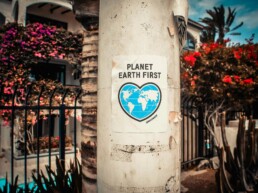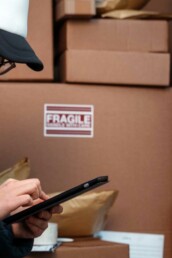Missed part one? Read it here!
Key Points from Part One:
- E-commerce Returns Account for 5 Billion Pounds of Landfill Waste Every Year
- Learn how to reduce carbon emissions caused by E-commerce returns
- E-commerce Sales Contribute to 20-50 Million Metric Tons of E-waste Every Year
- Learn how to reduce the amount of e-waste going to landfills
In part 2 of The Environmental Impacts of E-commerce, we’ll be touching on two final impacts of e-commerce and in what ways you can specifically start reducing your carbon footprint and making a positive impact for your shoppers and the earth you share.
PROBLEM
E-commerce Returns Account for 5 Billion Pounds of Landfill Waste Every Year
In 2020, the e-commerce sector saw over $428 billion in returns. Notably, the average return rate for online purchases was 30%, while brick-and-mortar stores experienced a lower rate of between 8% and 10%. Furthermore, with a quarter of all consumers returning between 5% and 15% of all online purchases, this trend results in over 5 billion pounds of returned products. Consequently, these returns produce 15 million metric tons of carbon emissions every year.
Learn more about the environmental impact of e-commerce returns.
SOLUTION
Reduce Your Contribution to the Carbon Emissions Caused by E-commerce Returns
Making your return policy prominent and easy to read for customers is key when reducing overall returns. Help your buyers locate, read, and understand your return policy before making a purchase and blindly returning items. Include important information like return shipping and restocking fees (if any) and define the acceptable conditions of returns. Be clear about what is and isn’t returnable.
Additionally, prioritizing exchanges over returns will help your e-commerce lower its return rate AND its carbon footprint. Making exchanges the preferred option helps direct customers to an eco-friendly choice while still giving them the freedom to decide.
Learn more tips and tricks about avoiding returns altogether.
PROBLEM
Growing E-commerce Sales Contribute to 20 – 50 Million Metric Tons of E-waste Every Year.
As the world of technology grows in popularity, so does the global e-commerce sales of electronics. Every year, 20-50 million metric tons of e-waste is produced by mass disposing of items like
- Cellphones
- Laptops
- Keyboards
- Televisions
Which have created the fastest growing waste stream in America. E-waste is not limited to consumers; companies also contribute industrial e-waste, such as
- Vehicle batteries
- Refrigeration systems
- Automated equipment
- IT equipment
One of the biggest environmental impacts of e-waste is the toxic chemicals it releases. When exposed to heat, e-waste emits chemical substances that damage the atmosphere, toxify groundwater, and dead-zone nearby ecosystems. In a study conducted by the United Nations Environmental Programme, out of 300 school children living near Dandora, the biggest dumpsite in East Africa, half the children tested positive for respiratory problems, and 30% had blood abnormalities. Both are indicators of heavy-metal poisoning caused by the toxicity of discarded electronics. Moreover, these findings highlight the severe health impacts of improper electronic waste disposal on vulnerable populations.
SOLUTION
Reduce the Amount of E-waste Being Sent to Landfills
As an e-commerce company, it’s important to take a holistic approach to minimize your impact on the planet. By partnering with electronic recycling programs or joining the Sustainable Materials Management (SMM) Electronics Challenge, you can responsibly recycle electronics, from in-house tech equipment to industrial batteries. This proactive approach not only helps reduce e-waste but also contributes to a sustainable future.
Additionally, by repairing devices once they’re damaged or outdated instead of replacing them, you can reduce additional waste and save money. Those laptops you plan on throwing away for lagging problems could need a simple hardware update and they’ll be ready to tackle the next round of staff.
Beginner’s Guide to Third-Party Logistics (3PL)
The world of e-commerce is always changing, therefore understanding the roll of Third-Party Logistics is integral to keeping up. In light of this our beginner’s guide to third-party logistics (3PL) will delve into the essential aspects, offering insights into fulfillment services, warehousing, and much more.
Read More…
E-commerce companies could drive themselves mad trying to tackle every good cause. That’s why, when you partner with Falcon, you contribute to sustainability practices that would otherwise be overwhelming. Here at Falcon, we are experts in sustainable fulfillment. By embracing sustainable practices, you can demonstrate your commitment to the environment. Additionally, this approach will help you connect with eco-conscious consumers and reinforce your brand’s dedication to sustainability.





